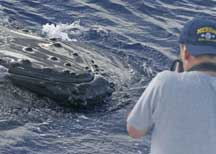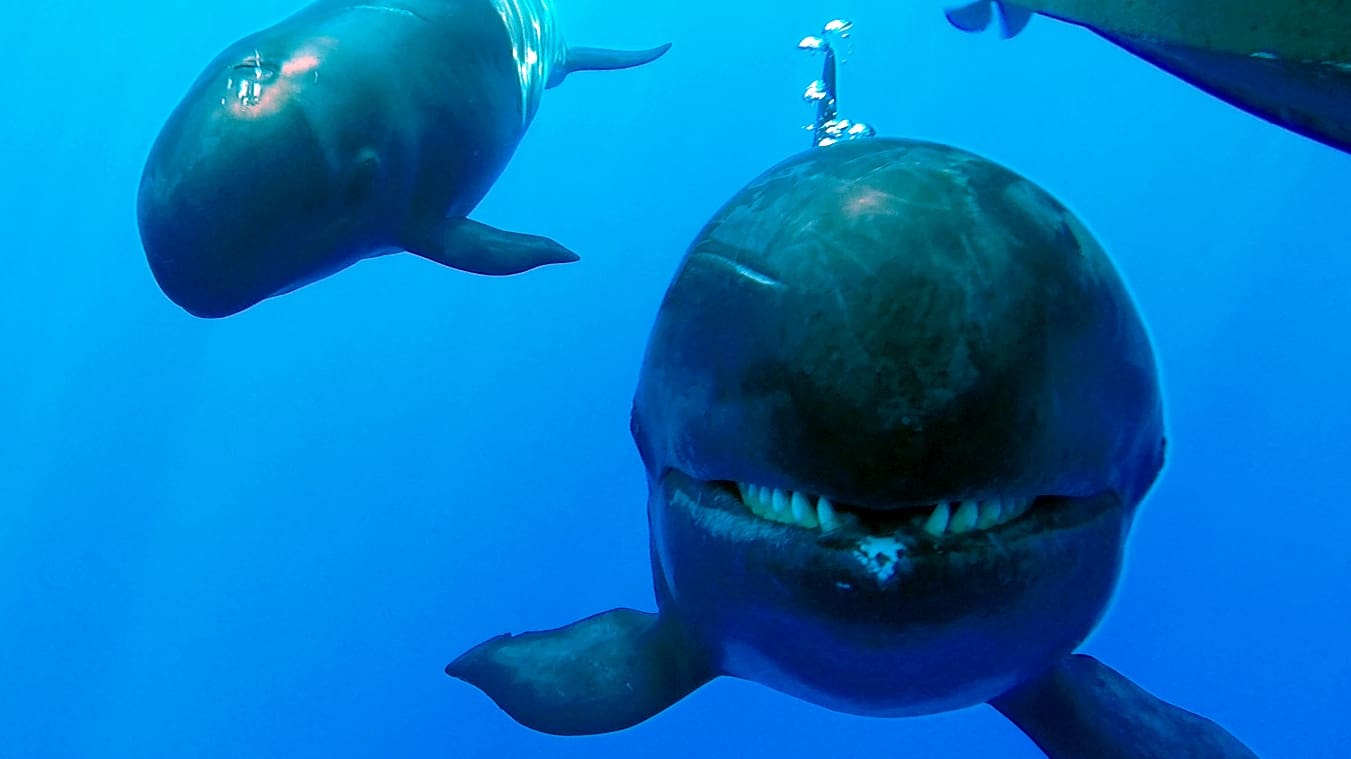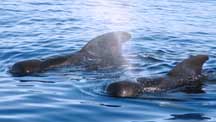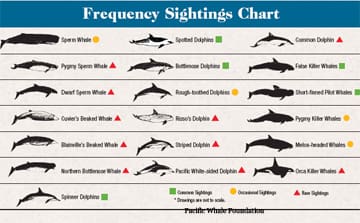Year-Round Whale Watching in Hawaii
Cetacean Sensation
Nothing beats the awe-inspiring rugged beauty of the Waianae coast. Except… it’s equally stunning and diverse wildlife.
Get in touch with your Wild Side and meet your finned counterparts on Oahu year round whale watching of Hawaii’s “Other Marine Mammals“…
The array of whale and dolphin species in the clear temperate waters of Oahu are known world-wide amongst marine biologists 
The Hawaiian term for dolphin is nai’a, and refers to all the smaller dolphins found in Hawaiian waters, though “kiko” is used for spotted dolphins. The larger pilot whales, false killer whales, pygmy killer whales etc. are usually termed “blackfish”.
There are 18 species of toothed whales in Hawaiian waters including Sperm Whales, Pygmy Whales, Melon-headed whales, False Killer whales, and rarer Orcas and Beaked Whales. Other dolphin species encountered year-round include the resident Rough-Toothed Dolphins, Pilot Whales, Spinner, Bottlenose, and Spotted Dolphins.
The humpback whale is by far the most common baleen species found in Hawaiian waters, although there have been rare sightings of fin, minke, Bryde’s, blue, and North Pacific right whales – and one grey whale – as well.
Pods of dolphin and whale commonly contain “nursery groups” – mothers with their young, adolescent females taking turns “babysitting”, juveniles, and a few older males mixed in. The pod stays in contact with each other via extensive and complicated sonar communication systems made up of click’s, whistles, squawks, and high pitched squeals.
“We measure intelligence first by brain size and complexity – dolphins and other whales appear to be second only to modern humans. Observing their behavior – they are self-conscious individuals with personality, memory and the ability to reflect on their own thoughts. This actually meets the definition of a person, and is consistent with the brain evidence.”
– Lori Marino, neurobiologist
Whale Watching Takes Place Onboard:
Throughout the course of the year many species are encountered in these waters. The depth to which you travel will usually determine what species you will see. Pelagic birds diving and feeding are usually the tip off to the blue-water species. Large blows (spouts) from humpbacks or sperm whales are easily seen from afar. Part of the excitement is that each day offers unexpected surprises along with the common. Wonderful photographic models, these animals provide guests the opportunity to take home fantastic vacation pictures or video footage, and one of the best souvenirs of their time spent in Hawaii. Photos also add to conservation management. One way to accomplish this is through sharing with research programs and databases
Wild Side’s wildlife tours focus on education and conservation so that an interactive relationship can be maintained in the best interest of both humans and dolphins. We strive to foster admiration and deep respect for these wonder-full marine mammals.
Although our sighting rates are at 95+% we cannot guarantee sightings, interaction with wild dolphins, whales, snorkeling, nor ideal weather conditions. We reserve the right to not facilitate in-water OR shipboard encounters which we feel may compromise the well-being of our guests or ocean wildlife. All passengers are required to wear locator/flotation devices. We do not offer transportation to the boat harbors.
Wild Side adheres to the WCA Global Best Practice Guidance Whale Watch minimizing the risks of adverse impacts of whale watching.



